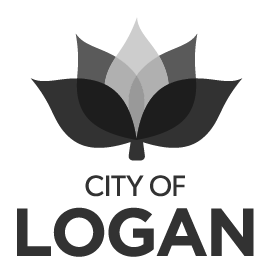Optimising Volunteers and Staff for Enhanced Engagement in Sports Clubs and Community Organisations
In every sports club and community organisation, the goal is to have a team of happy and engaged volunteers who contribute their time and skills for the betterment of the community. But what exactly defines a happy volunteer? And how can we create an environment that fosters happiness and satisfaction among our volunteers? In this article, we will explore these questions and provide insights into volunteer management for Australian volunteers in sports clubs and community organisations.
Let's start by defining what we mean by happy volunteers. A happy volunteer is someone who not only finds fulfilment in their role but also feels valued and appreciated for their contributions. They are motivated, enthusiastic and enjoy the time they spend volunteering. Our ultimate aim is to achieve happiness and satisfaction within our organisations.
Think back to when you first got involved in your organisation as a volunteer. Why did you make that decision? Ask yourself and those around you, and you'll likely find answers such as wanting to support your kids, being involved in the community, helping out, or giving back. Rarely does anyone say they got involved to attend meetings. Yet, here we are! It's important to acknowledge that volunteering is always a choice, even if it sometimes feels forced.
To illustrate the importance of decision-making in volunteering, let's consider the story of Marie. Many community organisations still cling to the old ways of doing things simply because it's how they've always been done. Marie takes on all the tasks that shouldn't be done by the Treasurer, and while she may feel productive, there are broader costs to her club. If she's too busy to warmly welcome new members or make them feel part of the club's 'tribe,' it can have a lasting impact on how these newcomers perceive the organisation. We often act this way because we feel obligated, but it's important to recognise that volunteering is always a choice.
Over the past decade, volunteering rates in Australia have seen a decline. While it's challenging to pinpoint the exact numbers due to changes in data collection methods, estimates suggest that the volunteer rate is now around 20% of the working population, with only 15% below the age of 34 (Australian Bureau of Statistics, 2020). This decline comes at a time when workloads are increasing, posing challenges for sports clubs and community organisations. However, the good news is that the majority of Australia's volunteers still contribute to sport and recreation organisations.
The decline in volunteerism coincides with an increase in compliance and reporting requirements for volunteer organisations. The graph below illustrates the challenge organisations face - a decline in volunteering on one hand and a rise in compliance obligations on the other. Organisations need to acknowledge this playing field and develop strategies to combat the decline in volunteerism.
To understand why people volunteer, we often turn to common reasons such as helping others, making a difference, finding purpose, connecting with the community, feeling involved and contributing to a cause they care about. However, these reasons are not the underlying motivations but rather justifications for the one true reason - people volunteer because they want to. As Dale Carnegie wrote in "How to Win Friends and Influence People," the key to getting anyone to do anything is by making them want to do it.
So, how do we encourage people to want to volunteer with our clubs and organisations? It starts by recognising that volunteering is a choice, often driven by emotional desires. Just as with emotional buying decisions, people make their choices based on emotions and then employ logic to justify them. Volunteers may say they want to "give back," but at a deeper level, they are motivated, enthusiastic and genuinely enjoy the experience.
When volunteers feel overwhelmed or near burnout, they still choose to volunteer because they believe the consequences of not doing so would be worse. Volunteering is willingly giving time for the common good, without financial gain. Understanding this is vital as we seek to create a culture where people genuinely want to volunteer.
Culture in Organisations
To establish a positive culture, it's important to build relationships and connections with volunteers. Take the time to get to know them, their interests and their reasons for getting involved. Create a welcoming environment where volunteers feel valued and important. This approach cultivates a sense of friendship and support, making it more likely that volunteers will offer their help when needed.
Structure for Effective Volunteer Management
Structure and clarity play key roles in effective volunteer management. Clearly define roles and responsibilities and avoid overwhelming individuals with multiple tasks. Compartmentalise the workload and delegate specific jobs to different volunteers. This ensures that everyone understands what is expected of them and allows for a more sustainable distribution of tasks.
Induction and training are critical steps often overlooked. Provide new volunteers with a welcoming and manageable introduction, offering guidance and information about the organisation, its structure and policies. Consider creating welcome packs that include key details, contact information and any necessary training materials
Recognition and Rewards for Your Volunteers
Recognition and rewards are important for volunteers, but it's important to strike the right balance. While trinkets and incentives have their place, they should not create an expectation of rewards. Instead, focus on genuine appreciation, heartfelt thanks and opportunities for volunteers to have a voice and provide feedback. Volunteer events and celebrations can also be effective in showing gratitude and fostering a sense of community.
Paid Staff in Organisations
In some cases, organisations may consider employing paid staff to handle certain tasks that are difficult to delegate or require specialised skills. However, it's important to navigate the transition carefully and ensure compliance with employment regulations. Seek professional advice when necessary to understand the implications and responsibilities associated with employing paid personnel.
Health and Safety for Your Volunteers
Managing volunteers also involves considering health and safety obligations. Even if your organisation has only one paid employee, it is crucial to operate as if the Work Health and Safety (WHS) Act applies to all workers, including volunteers. Superannuation, insurance and long-service leave entitlements should be addressed to ensure compliance with legal requirements.
Volunteer management is an ongoing process that requires consistent effort and a willingness to adapt. By creating a positive culture, defining roles, providing support and recognition and considering appropriate employment options, you can optimise the engagement of volunteers and staff in your sports club or community organisation.
At CPR Group, we understand the challenges you face and are here to support you in optimising your volunteer and staff management strategies. Together, we can create a vibrant and fulfilling environment where everyone can thrive and make a meaningful impact.
Contact CPR Group today to speak to our industry expert consultants about volunteer management and governance support for your organisation. Email us at info@cprgroup.com.au or call us on 1800 100 204. Visit our website at www.cprgroup.com.au for more information.





























